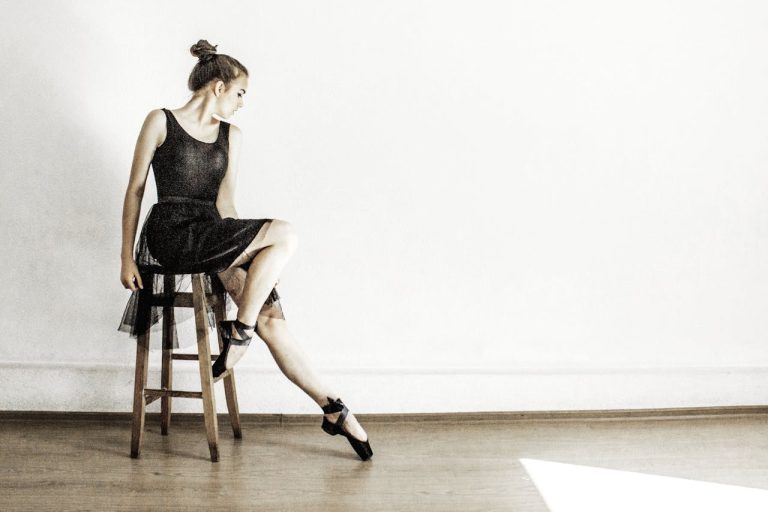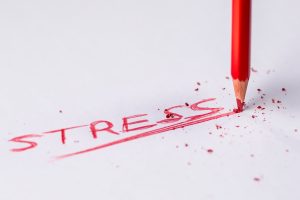As an experienced writer and enthusiast of the IB curriculum, I’ve observed countless students grappling with the IB Dance Internal Assessment (IA). Let’s face it: picking the right topic can be a bit of a dance. But fear not! I’m here to guide you through the rhythm of choosing engaging themes for both the Standard Level (SL) and Higher Level (HL) in the IB Dance IA and offer some topic ideas.
Understanding IB Dance Syllabus
The IB Dance subject is part of the IB Diploma Programme, designed for students aged 16 to 19. This course comprehensively studies dance as an art form, balancing theoretical and practical elements. It’s tailored for students interested in dance and performance arts. Still, it also caters to those looking to deepen their understanding of dance’s cultural, artistic, and historical aspects.
The course includes practical (performance and choreography) and theoretical (dance analysis and critique) elements. Students are encouraged to perform, create dance pieces, and study and analyze various dance forms from different cultures and periods. One of the unique aspects of the IB Dance course is its focus on cultural diversity. Students explore a range of dance traditions and styles from around the world, gaining an understanding of dance as a form of cultural expression and communication.
The course places a strong emphasis on creativity and personal expression. Students are encouraged to develop their choreographic style and to express their ideas and emotions through movement. Alongside practical skills, students are taught to critically analyze their work and that of others. It includes studying professional works, understanding the elements of dance composition, and exploring the role of dance in society.
Like other IB subjects, dance is offered at Standard Level (SL) and Higher Level (HL). The main difference between the two levels is the depth and breadth of study, with HL requiring more in-depth research of the subject. Assessment in IB Dance involves internal and external components: solo or group performances, choreography, written papers, and analytical tasks. The Internal Assessment (IA) is a dance project that includes a performance and written analysis, while the external assessment typically involves written exams and a recorded performance. Also, I recommend reading about the IB Internal Assessment rubric in our blog.
From my experience, IB Dance is a dynamic and engaging subject that combines physical skill with intellectual inquiry, offering students a platform to appreciate the world of dance both as performers and as knowledgeable spectators.
IB Dance IA Topics and Research Questions
Each of these IB Dance IA topics offers a rich field for research and can be tailored to fit the specific interests and goals of the student. The research questions are designed to provoke critical thinking and in-depth analysis, aligning with the objectives of the IB Dance curriculum.
You Might Also Like:
- Theatre IA Topics
- Music IA Topics
- Visual Arts IA Topics
- IB Business Management Extended Essay
- Psychology Extended Essay Topics
- How to Write an IB Internal Assessment
- What Is an Internal Assessment?
- IB EE vs IA. What are the Main Differences?
- How to Ask a Question in an Essay
- How to Choose a Research Question for an Extended Essay?

Standard Level (SL) IB Dance IA Topics
The SL Dance course focuses on the foundational elements of dance, including performance, choreography, and dance analysis. It offers students an opportunity to study a range of dance styles and traditions while also developing their dance skills and creative expression:
- Exploring the Evolution of Ballet. How has classical ballet evolved from its origins to the present day?
- Contemporary Dance and Emotional Expression. How does contemporary dance communicate emotions and narratives?
- Traditional Dances of Africa. What is the significance of traditional African dances in contemporary African culture?
- The Influence of Popular Culture on Hip-Hop Dance. How has hip-hop dance been shaped by changes in popular culture over the last decade?
- Indian Classical Dance Forms. How do Indian classical dances like Bharatanatyam and Kathak convey stories and emotions?
- Folk Dances Around the World. What role do folk dances play in preserving cultural heritage?
- Dance and Gender Roles. How do traditional dance forms reinforce or challenge gender roles?
- Latin American Dance Styles. How do different Latin American dance styles reflect the region’s cultural diversity?
- The Impact of Technology on Dance Performance. In what ways has modern technology transformed dance performances?
- Dance Therapy and Mental Health. How effective is dance therapy in improving mental health?
- The Business of Dance. What are the challenges faced by professional dancers in the dance industry?
- Dance Education in Schools. How does dance education benefit students in primary and secondary schools?
- The Art of Choreography. What are the key elements in creating a successful dance choreography?
- Dance Costumes and Their Significance. How do costumes enhance the storytelling aspect of dance?
- The Role of Music in Dance. How does music influence the structure and mood of a dance piece?
- The Influence of Cultural Festivals on Dance. How do cultural festivals influence the development of local dance forms?
- Dance as a Form of Social Protest. In what ways has dance been used as a form of social protest throughout history?
- The Role of Dance in Storytelling in Asian Cultures. How is dance used for storytelling in Asian cultures?
- Jazz Dance and American Culture. How does jazz dance reflect the evolution of American culture?
- The Integration of Dance in Contemporary Theater. How is dance integrated into contemporary theatrical productions?
- Dance and Gender Fluidity. How is dance used to explore and express gender fluidity?
- Impact of Dance Competitions on Dance Styles. How have dance competitions influenced the evolution of certain dance styles?
- The Role of Dance in Physical Education. How can dance contribute to physical education programs in schools?
- Dance in Advertising and Marketing. How is dance used as a tool in advertising and marketing?
- Influence of Celebrity Dancers on Popular Dance Trends. How have celebrity dancers influenced popular dance trends?
- Dance and Community Building. How does dance contribute to community building and social cohesion?
- Dance as a Tool for Cultural Exchange. How can dance be used as a tool for cultural exchange and understanding?
- Environmental Themes in Dance. How are environmental themes expressed through dance?
- The Relationship Between Dance and Fashion. How does the world of fashion influence dance and vice versa?
- The Psychology of Dance Performance. What psychological factors influence a dancer’s performance?
IB Dance SL is often more accessible for students with a basic background or limited experience in dance. Also, remember that IA differs from Extended Essay significantly.
Get Help With Your Paper
Higher Level (HL) IB Dance IA Topics
HL students engage with SL’s core components but dig deeper into each area. They research more complex concepts in dance and are expected to demonstrate a higher level of understanding and analysis. HL students often study additional dance styles and theories, leading to a more comprehensive understanding of the subject:
- The Intersection of Dance and Politics. How has dance been used as a tool for political expression in history?
- Cultural Appropriation in Dance. What are the implications of cultural appropriation in contemporary dance forms?
- Dance and Philosophy. How can dance be used as a medium to explore philosophical concepts?
- Dance in Film and Media. How has the portrayal of dance in film and media evolved over time?
- Psychoanalytic Approaches to Dance. How can psychoanalytic theory be applied to the interpretation of dance?
- Feminist Perspectives in Dance. How have feminist theories influenced contemporary dance choreography?
- The Role of Dance in Ritual and Religion. What is the significance of dance in various religious and ritualistic practices?
- Exploring Dance and Disability. How do dancers with disabilities challenge traditional norms in dance?
- The Sociology of Dance. How does dance reflect and shape societal norms and values?
- Dance and Globalization. How has globalization affected the transmission and transformation of traditional dance forms?
- Dance Criticism and Analysis. What methodologies are used in the critical analysis of dance?
- Dance and Identity Formation. How does dance contribute to the formation of cultural and personal identity?
- Historical Reconstruction of Dance. What are the challenges in reconstructing historical dance forms?
- Dance and Technology. How is emerging technology, like virtual reality, reshaping the dance experience?
- The Neuroscience of Dance. How does dance affect cognitive and neurological processes in the brain?
- Dance and Postcolonial Theory. How can postcolonial theory be applied to the study of dance?
- Dance as a Means of Cultural Resistance. How has dance been used as a means of cultural resistance by marginalized communities?
- The Intersection of Dance and Linguistics. How can concepts from linguistics be applied to understand dance as a language?
- Dance in Non-Western Cultures and Globalization. How has globalization impacted traditional dance forms in non-Western cultures?
- Cross-Cultural Influences in Contemporary Dance. What are the implications of cross-cultural influences in contemporary dance?
- The Evolution of Dance Critique. How has dance critique evolved over the past century?
- Dance and Cognitive Science. How can cognitive science contribute to our understanding of dance learning and execution?
- Ethics in Dance. Body Image and Identity: What ethical concerns arise in dance concerning body image and identity?
- Dance and Urban Space. How does dance interact with and transform urban spaces?
- Intercultural Communication through Dance. How does dance facilitate intercultural communication and understanding?
- Dance and the Digital Age. How has the digital age transformed the creation and consumption of dance?
- Dance Education and Pedagogy. What are the current trends and challenges in dance education and pedagogy?
- Choreography and Social Commentary. How can choreography be used to make a social commentary?
- Dance and Human Rights. How can dance be used to promote and discuss human rights?
- Dance Movements and Political Movements. How are dance movements and political movements interconnected?
Thus, the written analysis for HL students is more extensive and requires deeper critical engagement and theoretical understanding. However, you must meet a word count for your IA paper.
The Bottom Line
In conclusion, choosing the right topic for your IB Dance IA can be a rewarding part of your IB path. Take advantage of this opportunity to express your creativity and understanding of dance. As someone who has seen many students succeed, I believe in your potential to create something remarkable. Good luck, and remember that you can always contact our experts at the IB IA Writing Service if you need help.

Nick Radlinsky
Nick Radlinsky is a devoted educator, marketing specialist, and management expert with more than 15 years of experience in the education sector. After obtaining his business degree in 2016, Nick embarked on a quest to achieve his PhD, driven by his commitment to enhancing education for students worldwide. His vast experience, starting in 2008, has established him as a reputable authority in the field.
Nick's article, featured in Routledge's "Entrepreneurship in Central and Eastern Europe: Development through Internationalization," highlights his sharp insights and unwavering dedication to advancing the educational landscape. Inspired by his personal motto, "Make education better," Nick's mission is to streamline students' lives and foster efficient learning. His inventive ideas and leadership have contributed to the transformation of numerous educational experiences, distinguishing him as a true innovator in his field.

How to Overcome Procrastination During IBDP?
Procrastination during IBDP is something almost every IB student faces—but it doesn’t have to control your progress. In this article, we share realistic tips and study tricks that actually help you stay on track.

How Does IB Check for Plagiarism and AI?
One of the things you might be most worried about when you’re writing an Internal Assessment or extended essay is how does IB check for plagiarism. Over the years, I’ve worked with many students, and I can say that the IB really values academic honesty. But what tools and methods does the IB use to make sure your work is original?

Balancing Part-Time Work and IB Studies
Many students question me, “How can I balance part-time work and IB studies without getting too tired?” Anyway, from what I’ve seen, it’s not just about fitting things into your plan. You need to know what’s most important to you, how to deal with stress, and when to take a break.

Communication with IB Teachers and Advisors
Good communication with IB teachers and advisors is often the difference between making it through the IB and flourishing in it. I’ve worked with many students, and those who know how to have deep conversations with their teachers and advisors always get back on track faster.

How to Manage Exam Anxiety and Stress During IBDP?
It’s no wonder that many students ask, “Why are IB students so stressed?” They must handle six subjects, plan for the Extended Essay, and do their CAS hours. IB stress is real, and I’ll say that right away.

Maximizing Your Extracurricular Profile Beyond CAS
One thing needs to be made clear: the CAS (Creativity, Activity, Service) part of the IB Diploma is important, but it’s not the only part. In fact, from my experience as an IB mentor, students who build a strong profile outside of CAS tend to stand out more during university admissions.
